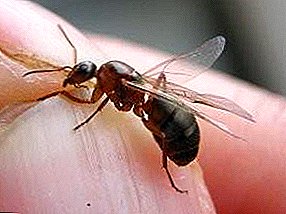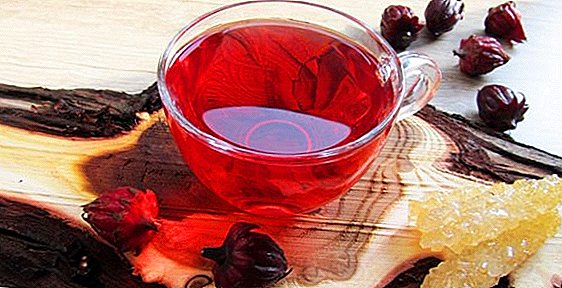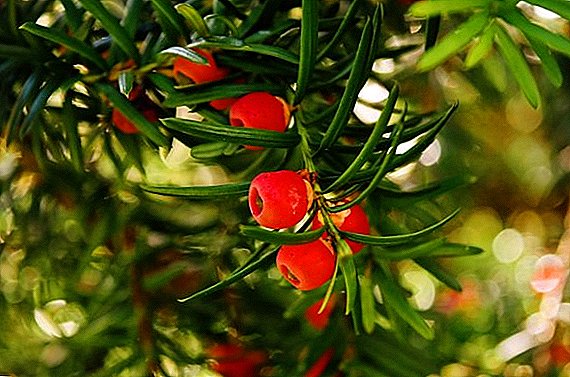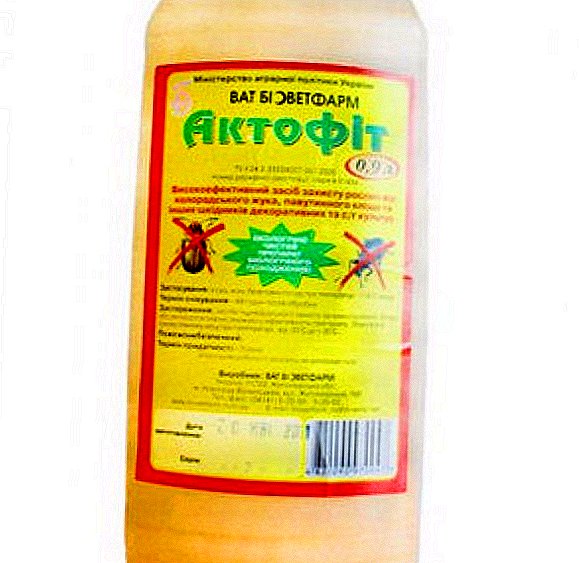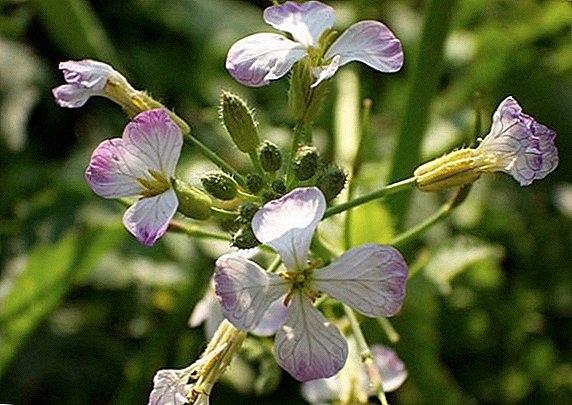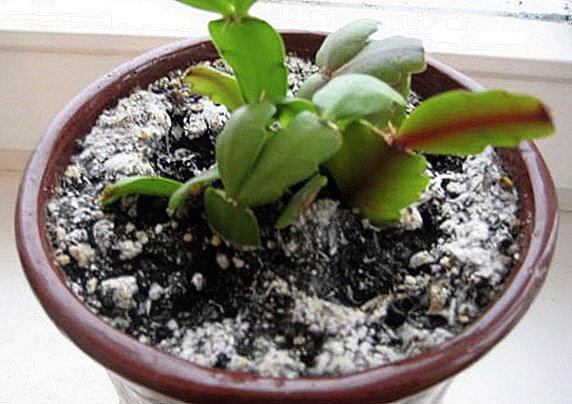 Beginning flower growers sooner or later face the problem of the appearance of a whitened layer of substrate in a pot, and often this causes a feeling of anxiety for indoor plants. In fact, this state of the soil is not a serious problem that can greatly harm the plant, but the attendant factors are dangerous. Today, we will examine in detail the causes of white plaque and analyze how to cope with this problem and what to do in the future to prevent such a state of the substrate again.
Beginning flower growers sooner or later face the problem of the appearance of a whitened layer of substrate in a pot, and often this causes a feeling of anxiety for indoor plants. In fact, this state of the soil is not a serious problem that can greatly harm the plant, but the attendant factors are dangerous. Today, we will examine in detail the causes of white plaque and analyze how to cope with this problem and what to do in the future to prevent such a state of the substrate again.
Potted Ground Problems
Very often, indoor flowers perish due to improper care, which primarily affects the substrate and thus harms the roots of the plant.
White coating on the surface
When the substrate turns white in a flowerpot, this is a sign that the plant is improperly cared for, so first of all it is necessary to identify the factors that caused the problem.  Causes of
Causes of
There are several reasons for the appearance of a whitened substrate, among them there are:
- Too frequent watering - Salts appear on the surface of the ground due to the active evaporation of water.
- Irregular sparse watering - Salts can accumulate on the soil surface. In this case, the bottom layer of soil in the pot is petrified, and water only moistens the top layer of the substrate, which causes white scurf to appear.
- Insufficient air humidity causes intensely evaporated liquid that has fallen into a flower pot - in this case, salts actively accumulate on the upper layer of the substrate. The soil becomes saline, which affects the normal development of plants.
- Fertilizer oversupply. If the flowers are fed very often or the concentration of dressings is too high, the substrate may become covered with a white crust.
- Incorrectly selected substrate for growing pot plants. Buying it in the store, pay attention to the label. There are cases of buying a universal substrate that is used for growing seedlings. This soil is specially treated with numerous supplements in order to stimulate the rapid growth of seeds. In this regard, a white bloom begins to form on the surface, and this can adversely affect the health of indoor flowers.
- Non-compliance with the ratio of the volume of the pot to the size of the plant. As you know, experienced growers recommend choosing a pot size so that it is only slightly larger than the plant that will be planted in it. If you neglect this rule and buy a large pot, pour a lot of substrate there and plant a small plant, then its roots will not be able to absorb moisture that will be applied to the soil. Thus, with active evaporation of the liquid, the surface is quickly covered with white bloom.
 Soil treatment
Soil treatmentThere are several options for dealing with white bloom on the soil in flower pots. You need to choose a more appropriate way yourself according to the cause of the problem.
At home, it is useful to grow chlorophytum, aloe, laurel, ficus, kalanchoe, chrysanthemum, cactus, pelargonium, sansevieriya.
To plaque on the substrate formed more slowly and was almost imperceptible, it is recommended to sprinkle it with clay on top.
It is necessary to take into account the fact that after a certain time the white deposit can also settle on the expanded clay: in this case, the upper drainage is removed, washed well and put back into the pot.
There is another option to combat the problem - for this use river sand. They fall asleep on top of the substrate and loosen the soil well with a wooden stick. Such a manipulation will not only avoid the appearance of white bloom on the substrate, but also be useful to the roots.
The quickest and easiest way is to remove the top layer of the substrate with whitened earth, and instead fresh soil is poured. If you have determined that the reason for the appearance of white bloom on the ground is the dryness of the air in the room, it is recommended to install the pot on a tray with claydite, which is regularly sprayed with water from a spray bottle. This way you create the necessary moisture around the pot and prevent the problem from developing.
If you have determined that the reason for the appearance of white bloom on the ground is the dryness of the air in the room, it is recommended to install the pot on a tray with claydite, which is regularly sprayed with water from a spray bottle. This way you create the necessary moisture around the pot and prevent the problem from developing.
Mold in flowerpots
Often the occurrence of white plaque is associated with a biological cause - the development of fungal spores and the appearance of mold on the substrate. This situation provokes improper care for the flower or the influence of other negative environmental factors.
Did you know? Mold belongs to the most ancient living organisms on the planet: it appeared more than 200 million years ago. During its existence, the mold has been able to adapt to the most difficult natural conditions and survive on glaciers, in radioactive zones and in open space.
 Often the first mold appears in the place where the soil and the pot come into contact. The effect of this interaction is characterized by a white or brownish bloom that spreads with great speed. If you do not deal with the cause of this problem, the air is saturated with a large number of fungal spores, and after a while rapidly developing colonies of fungi form, and the flower dies.
Often the first mold appears in the place where the soil and the pot come into contact. The effect of this interaction is characterized by a white or brownish bloom that spreads with great speed. If you do not deal with the cause of this problem, the air is saturated with a large number of fungal spores, and after a while rapidly developing colonies of fungi form, and the flower dies.We advise you to find out which flowers are best for pots.
Causes of
In most cases, the occurrence of mold in the pot is a consequence of the influence on the substrate of any negative factors.
In this case, there are several reasons for the development of mold:
- Excessive watering and fluid stagnation in the substrate. As a result of constant overmoistening, spores of the fungus develop rapidly, and mold is formed.
- Low temperature and high humidity in the room is a favorable environment for the development of fungus.
- Regular watering the soil with cold water.
- Neglecting or improper use of drainage leads to blockage of holes in the pot and provokes stagnation of water in the ground, which causes the spread of fungus.
- Using mold contaminated with spores mold for planting flowers.
Important! Often the fungus develops in poorly ventilated areas in the spring and autumn, when the humidity is high, the apartment is cold, and the evaporation of moisture from the soil is minimal.
 Soil treatment
Soil treatmentOften the reason for the development of mold in the pot is excessive watering and humidity, so if fungal lesions were noticed in the substrate, it is first necessary to correct the irrigation schedule. For this, the watering frequency is reduced and the volume of liquid is reduced.
Learn how to choose indoor plants for the bedroom.
If the flower requires rare but abundant watering, it is necessary, after each wetting of the soil, to break through the substrate with a wooden stick, to the maximum depth, reaching the drainage.
When loosening it is necessary to act very carefully so as not to damage the roots.
In order to protect the flower from damage and remove mold from the pot, it is recommended to do the following manipulations:
- Scrape off the outer part of the substrate affected by the fungus. It is necessary to do this manipulation immediately, as soon as the first foci of mold fungi are found. If you wait a little with the removal, the infection will begin to penetrate into the inner layer of the soil, which will cause the plant to rot and die.
- Treat the bottom layer of the substrate with acidic water. For this, a teaspoon of citric acid is dissolved in a glass of water. Thanks to this fluid, spores of the fungus will not multiply and will soon die.
- The missing part of the substrate in the pot should be filled with new soil, in which you can add bactericidal agents, designed specifically to resist fungi. To do this, suitable charcoal, crushed into small pieces, or sphagnum.
- After the done manipulations, the substrate is watered with a solution of "Fundazol" (1 l of water and 2 g of product). If the mold struck the flower, it is also treated with this spray solution.
 Treat the lower substrate layer with citric acid.
Treat the lower substrate layer with citric acid.If you notice that the mold has spread to the lower layers of the substrate, you can try to save the flower by transplanting it. To do this, carefully remove it from the pot, carefully clean the roots from the substrate. Next, plant the flower in the usual way.
Some growers use chemicals that are designed to combat mold, more information about them can be found in a specialized store.
Important! When selecting such funds, it is necessary to carefully read the label on the product to ensure that it does not harm the plant.
Midges in the ground
Often indoor flowers are affected by midges, which appear due to non-compliance with the rules of care. The most common are poduras and stsiaridy - flower midges, which focus on both the soil and the green part of the plant. They do not bear harm to the flower, but their larvae can cause severe damage - affect growth, lead to wilting of leaves and flowers.  Causes of
Causes of
Among the main causes of the appearance of midges are:
- Excessive watering of plants. Constantly overmoistened soil is an ideal place for the vital activity and reproduction of midges.
- The contamination of land that was acquired for transplanting plants.
- Watering a flower with liquids that are not intended for this purpose. For example, some housewives prefer to water pot plants with tea brewing, which sometimes becomes the cause of pest damage.
We advise you to learn about the 15 most beautiful indoor plants for your home.
Soil treatment
There are several effective methods that can deal with pests. These include: physical, chemical and folk.
Physical methods of pest control include:
- transplant to new soil. To do this, the flower is carefully removed from the pot, the roots are cleared of contaminated soil, and transplanted in the usual way, taking into account all the features of the plant;
Important! The pot in which the flower was located must be washed well with soapy water and rinsed with boiling water.
- partial replacement of the substrate. If there are not many bred flies, you can remove them by replacing the topsoil. To do this, it is carefully scraped and thrown away, and the voids are filled with fresh substrate.
 Chemicals for the destruction of pests are purchased in specialized stores. To use such tools is quite simple, and they quickly cope with the task. Such drugs are presented in the form of "Muhoed", "Fufanona", "Agravertina", "Fitoverma", "Aktar". It is necessary to use them according to the instruction which is specified on a label.
Chemicals for the destruction of pests are purchased in specialized stores. To use such tools is quite simple, and they quickly cope with the task. Such drugs are presented in the form of "Muhoed", "Fufanona", "Agravertina", "Fitoverma", "Aktar". It is necessary to use them according to the instruction which is specified on a label.Often, indoor plants are invaded by pests. Learn how to get rid of scale insects, thrips and spider mites.
Among the folk remedies in the fight against midges use is distinguished:
- solution of potassium permanganate. To do this, dilute potassium permanganate in a liter of water - on the tip of a knife, so that the liquid turns a light pink shade. Water the resulting mixture with a flower once every 5 days and regularly spray it with a spray bottle;
- improvised means. These include tobacco, wood ash, garlic or orange peel, which are distributed over the surface of the substrate. Such means due to the smell frighten off the black flies and do not allow them to exist normally.
VIDEO: HOW TO GET RID FROM THE CATS WITH THE HELP
Unpleasant smell from the soil in a flower pot
Sometimes it happens that the soil in the pot begins to smell unpleasantly - this is a sign of souring the substrate and the beginning of the process of rotting the root system of the flower. This problem is directly related to improper care, and in order to save the plant, it is necessary to act immediately, as soon as you notice the first signs of souring.
Causes of
Among the most common causes of acidification of the soil are as follows:
- Late transplantation of plants from the substrate in which it was when you buy at a flower shop. This soil is too moisture-absorbing and often causes the plant to rot.
- Growth in heavy clay soil, which is not suitable for this plant and provokes its rotting.
- Excessive regular watering, especially during the winter period, or moving the flower in a dark, cold place.
- No drainage or drainage holes.
- Discrepancy between pot sizes and plant sizes.
Soil treatment
Due to acidification of the soil, the risk of complete destruction of the plant is very high, therefore, in order to save it, it is necessary to remove the flower from the pot and inspect the root system. If the roots are not damaged, then the earth ball is wrapped in a newspaper or a special absorbent material in several layers. The plant is placed in a warm place, away from direct sunlight.
Check out the features of growing indoor vines.
Periodically change the moisture-absorbing material until the liquid ceases to leak from the ground.  Perlite for plants After the clod is dried, it is dipped into perlite and planted in an old pot. Some time after planting, it is recommended to loosen the soil to provide air access to the root system of the plant.
Perlite for plants After the clod is dried, it is dipped into perlite and planted in an old pot. Some time after planting, it is recommended to loosen the soil to provide air access to the root system of the plant.
If after you have taken out an earthen clod, root rot was found, you should resort to transplanting the plant to a new substrate. To do this, the roots of the plant as much as possible cleaned of the old substrate, cut off the rotten roots and treat the cut place with crushed wood or activated charcoal. Next, the plant is planted in fresh ground.
Did you know? Experienced Florist Charcoal is often used as a drainage - it is able to absorb salts that will save the soil from souring. Accumulating excess fluid in itself, coal prevents overmoistening, and in the absence of watering gives moisture to the plant.
Preventive measures
In order not to subject the plants to testing in the form of mold fungi, black flies or souring of the substrate, it is necessary to follow some rules in the care of the soil in flower pots and regularly resort to prevention.
To preventive measures include:
- Regular, but not excessive watering.
- Pick a pot according to the size of the plant.
- Good drainage, which is selected according to the size of the holes in the pot, so as not to occlude them.
- Regular loosening of the soil for normal access of oxygen and leakage of fluid to the lower layers of the substrate.
- Soil treatment with a weak solution of potassium permanganate 1 time per month.
- Systematic airing of the room in which there are plants, maintaining the optimum temperature and humidity.
- The use of quality soil, which is sold in specialized stores and packaged in factory bags.
- Disinfection of purchased soil before planting a flower with potassium permanganate.
 Thus, the appearance of mold, white patina, unpleasant smell or midges in the soil of flower pots is directly related to improper care of the plants. In order to avoid unpleasant consequences, it is important to take into account the peculiarities of flower care and to observe preventive measures, and in the event of a problem, act immediately to keep the plant healthy.
Thus, the appearance of mold, white patina, unpleasant smell or midges in the soil of flower pots is directly related to improper care of the plants. In order to avoid unpleasant consequences, it is important to take into account the peculiarities of flower care and to observe preventive measures, and in the event of a problem, act immediately to keep the plant healthy.Reviews
Can someone come in handy ...




